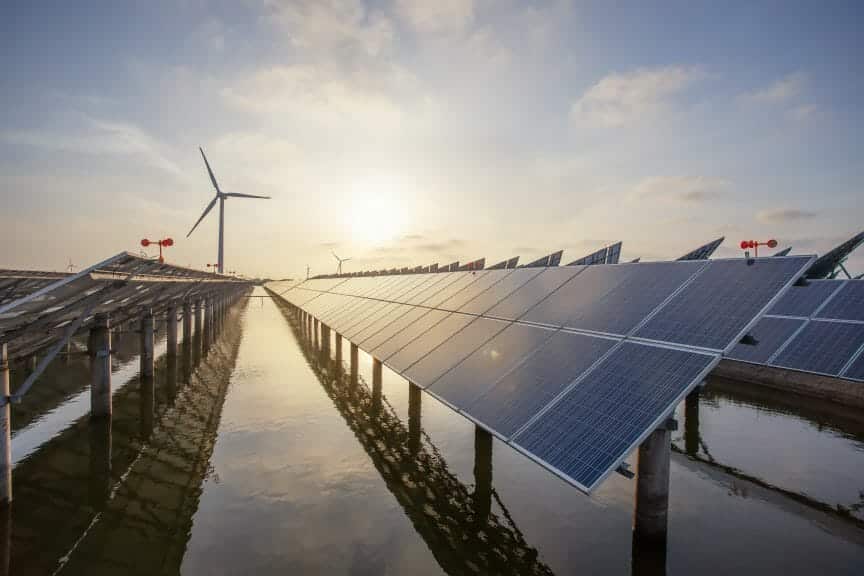One year ago, President Joe Biden passed the Inflation Reduction Act (IRA). It included a $369 billion investment in Energy Security and Climate Change Programs. This is the largest investment to fight climate change in the history of the world. The goal: a 40 percent reduction in carbon emissions by 2030.
What is the Inflation Reduction Act?
The act was designed to incentivize clean energy production and clean energy use by households. It is also designed to strengthen domestic manufacturing and fight high inflation in the U.S. The act promotes clean transportation, solar power, wind turbines, and clean battery storage. Ideally, the IRA creates American manufacturing jobs, while fighting the climate crisis.
Now, researchers are starting to get a clearer picture of just how effective the White House’s plan will be. Studies published by The Rhodium Group, an independent data analytics firm, say greenhouse gas emissions are on track to decrease between 32 to 51 percent by 2035. This is a 10 percent reduction in emissions compared to before the passage of the IRA.
The IRA is one step in Biden’s ambitious plan to achieve a zero-emissions economy by 2050. The White House Fact Sheet wrote that clean energy investments are key to keeping global temperature rise under 1.5 degrees Celsius.
Biden posted on Saturday, celebrating the IRA’s anniversary and early success. He took a firmly positive approach, emphasizing the 1 million jobs in clean energy the IRA creates and $800 annual health insurance savings for families. His caption acknowledged the urgency of the climate Crisis, with the assurance: “But we also have solutions.”
What is the Inflation Reduction Act Doing and is it Enough to Save the Planet?
In the last year, the effects of this clean energy investment have already started to take full effect. Grist, an environmental news non-profit magazine, points to the fact that the IRA has made wind power 55 percent cheaper. [renewable energy newsletter thing]
Still, many individuals are skeptical that the IRA is simply too little considering how far along the Climate Crisis is. Niklas Hohne, co-founder of the New Climate Institute, told AP News that the IRA was a big step, but the U.S. still has a long way to go in fighting climate change. “In global terms, this was long overdue.”
This July saw the globe’s hottest week on record. And as of this April, for the first time, the world is on track to surpass the 1.5 degrees Celsius limit on temperature rise set under the Paris Climate Agreement in 2015. Even with the IRA, the U.S. is still not on track to meet its 2015 pledge to decrease emissions by 50 to 52 percent by 2030.
Groups, such as Climate Defiance, a civil disobedience advocacy group criticized the Biden administration’s continued soft stance on industries like oil and fracking. The group protested the meeting of Biden’s National Climate Advisor. They wrote that the Biden administration’s insufficient reaction to the climate crisis is “hideous” and “will not stand.”
Is There Still Hope of Meeting our Climate Goals?
“Federal policy levers are only one piece of the decarbonization puzzle,” according to Grist Magazine. Individual states’ climate policies play a large role in determining the future of U.S. emissions. Unfortunately, all states’ policies are not created equal.
Fighting climate change remains a very partisan issue. Biden remarked in a Tweet on July 16th that “every Republican member of Congress voted against the Inflation Reduction Act.” This aligns with 2019 statistics by the Pew Research Center. Whereas 90 percent of Democrats felt the federal government was doing too little to fight climate change, only 39 percent of Republicans did.
But, there is a shift underway in the clean energy landscape. According to federal statistics, four out of the five states that produced the most wind-generated energy had Republican majorities. And red states, like Arizona, Georgia, and Texas relied heavily on solar energy. Though opinions on climate protection are partisan, red states are making a mark in the clean energy economy.
Ultimately, the full impact of the controversial climate law will not come into effect until 2026 to 2028, according to Princeton Professor Jesse Jenkins. The IRA is a significant step in fighting climate change. But factors like firms’ decisions, and states’ actions mean that the verdict on the IRA’s success is still in the wind.














